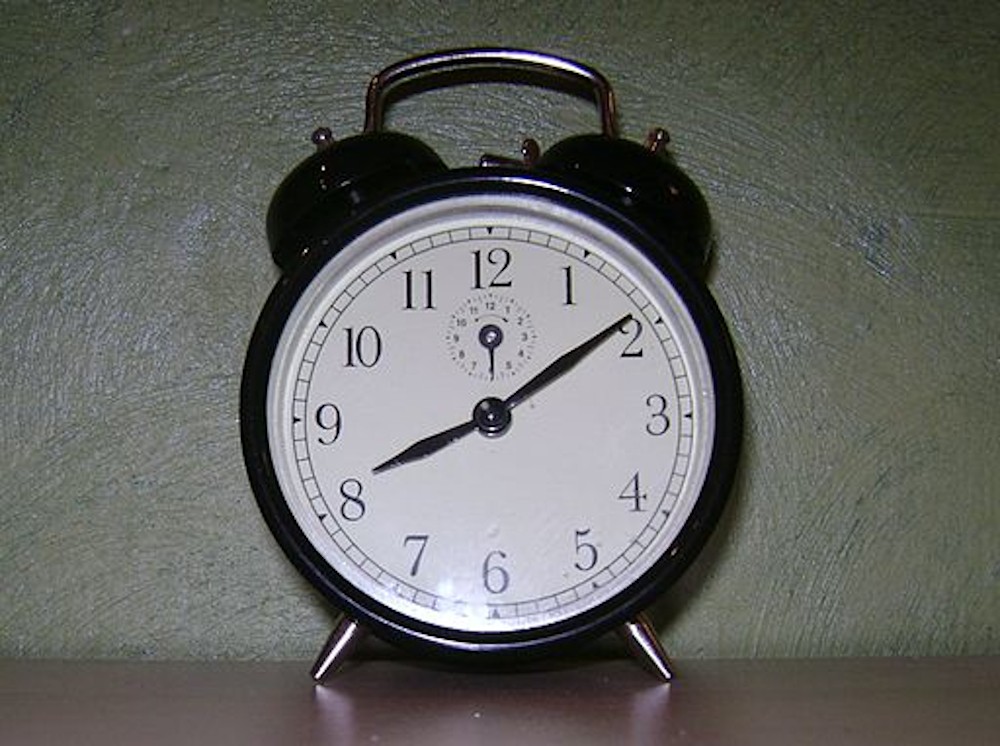
Genesis 1 tells us that a day is made up of both an evening (nighttime) portion, and a morning (“daylight”) portion. For example:
B’reisheet (Genesis) 1:31b
31b So the evening and the morning were the sixth day.
Leviticus 23:32 also tells us that the Day of Atonement lasts from one evening to the next. This confirms that the Hebrew day lasts from evening to evening. (The Day of Atonement is here called a “sabbath,” meaning a day of rest).
Vayiqra (Leviticus) 23:32b
32b “On the ninth of the month at evening, from evening until evening you shall celebrate your sabbath.”
Today we think about a day lasting 24 hours, but the term “hour” is not used in the Torah. This word is a later construction by the Egyptians, Greeks, and the Romans. However, Yeshua uses the term, telling us that there are 12 “hours” in a day (verse 9), and that there is also a nighttime portion (verse 10).
Yochanan (John) 11:9-10
9 Yeshua answered, “Are there not twelve hours in the day? If anyone walks in the day, he does not stumble, because he sees the light of this world.
10 But if one walks in the night, he stumbles, because the light is not in him.”
The concept of an hour is Egyptian. Originally in Egypt the sundial divided the daylight into 10 portions, plus two “twilight hours” (morning and evening), for a total of twelve portions. In Yeshua’s time the Romans also divided the sun’s shadow into 12 “hours.” According to this method, an hour was not 60 minutes long, as we think of it today. Rather, an hour was however long the sun cast its shadow between those particular marks on a sundial. Hours varied in length, being longer in the summer and shorter in the winter. However, what we need to see here is that while Yeshua used that term in the days of the Roman occupation (because people were familiar with the term), it has nothing to say about the way Yahweh originally defined a day as being a nighttime portion, followed by a daylight portion (and lasting for what today we would call “24 hours”).
Because some mistakenly believe the tem “day” can only refer to a 12-hour period of daylight (and not the 24 hours of night-and-then-day), numerous elaborate theories have been constructed about the calendar. Some of these include the belief that the day begins at morning, the belief that the day begins at noon, and the belief that Yom Kippur is actually two days long, etc. It is not our purpose to detail these theories here, but all of these many theories fall apart if we realize the term “day” refers both to a (+/-) “12-hour” period of daylight, and also to the 24-hour period of darkness and light that lasts from evening to evening.
It may also be helpful to realize that rabbinical Jews today maintain that there are four calendar years:
- A “sacred” calendar
- A civil calendar
- A calendar for kings, and
- A calendar for trees
In the first century our Jewish brothers also maintained a separate clock, which began about 6AM (“waking hours”). For example, Yeshua was put to death about the “ninth hour” on this “waking hours” clock.
Mattityahu (Matthew) 27:45-46
45 Now from the sixth hour until the ninth hour there was darkness over all the land.
46 And about the ninth hour Yeshua cried out with a loud voice, saying, “Eli, Eli, lama sabachthani?” that is, “My El, My El, why have You forsaken Me?”
[Note: the Peshitta reads, “For this I was born.”]
The “sixth hour” would have corresponded to 12 Noon, and the “ninth hour” would have corresponded to about 3PM, or what the Torah calls, “between the evenings” (the “first evening” being at noon, when the sun started its decline, and the “second evening” being at sunset).
For more information on the calendar, please see The Torah Calendar.